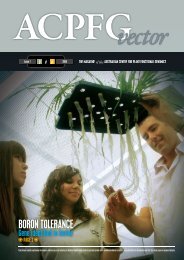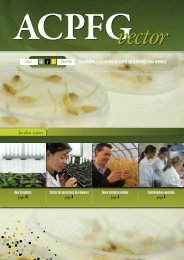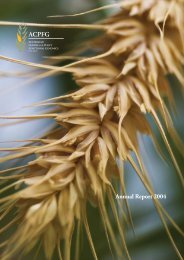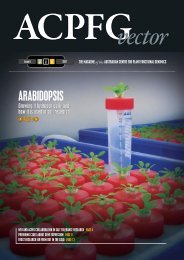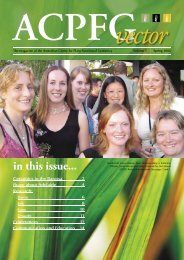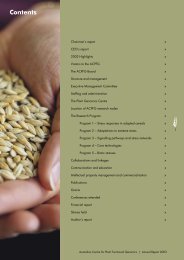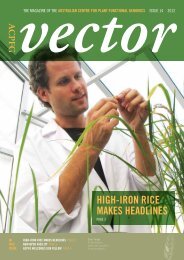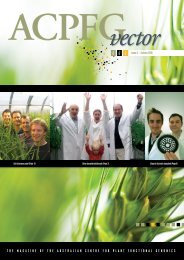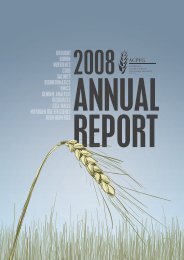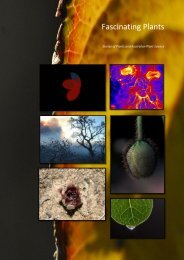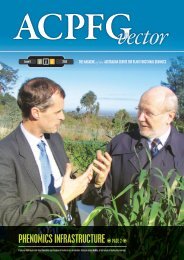ACPFG Annual Report
ACPFG Annual Report
ACPFG Annual Report
You also want an ePaper? Increase the reach of your titles
YUMPU automatically turns print PDFs into web optimized ePapers that Google loves.
CEO’s <strong>Report</strong><br />
This report marks a major phase transition for our centre.<br />
<strong>ACPFG</strong> was originally established with a very broad brief.<br />
While the focus was to develop and deliver genomics<br />
technologies for the Australian grains industry, Stakeholders<br />
had diverse expectations that have, not surprisingly, changed<br />
over the life of <strong>ACPFG</strong>. Our strong international and domestic<br />
collaborations and high quality science have reduced our<br />
original commercial drive, reflecting the path of cereal<br />
improvement in Australia, which remains largely in the public<br />
sector. While these shifts have translated into changes in<br />
the strategic plan for <strong>ACPFG</strong>, the scientific premises of the<br />
organisation have remained constant. When <strong>ACPFG</strong> was<br />
established plant genomics was seen as providing a new set of<br />
technologies, which offered opportunities to tackle previously<br />
intractable problems. The target identified – abiotic stress<br />
tolerance – was ambitious given the available resources, but<br />
allowed the development of capabilities and was clearly of<br />
prime importance to cropping in Australia. The severe climatic<br />
conditions in Australia over the past few years and political<br />
awareness of climate change have confirmed the importance<br />
of tackling abiotic stresses.<br />
Over the past five years we have been establishing the<br />
capabilities, resources and linkages needed to provide a<br />
plant genomics platform of the highest international standard.<br />
There were several assumptions made in developing the<br />
strategy. Firstly, we assumed we could apply the technologies<br />
developed largely for humans and model organisms to species<br />
with highly complex genetic and genomic makeups. For<br />
example, is it practical to apply the techniques of transcript,<br />
protein and metabolite profiling to species where little of the<br />
genome is sequenced? Our second assumption was that we<br />
could exploit the extensive genetic information and genetic<br />
populations for wheat and barley to target individual genes.<br />
By and large both assumptions have proved valid. Technology<br />
platforms have been established and used to tackle a wide<br />
range of traits. Positional cloning, albeit combined with<br />
clever bioinformatics, transcript profiling and yeast screening,<br />
resulted in the isolation of the major boron tolerance locus<br />
from barley. Similarly, by combining forward and reverse<br />
genetics, the genes involved in aluminium tolerance from<br />
rye and the major genes involved in sodium exclusion from<br />
durum wheat have been isolated.<br />
2 2007 <strong>ACPFG</strong> ANNUAL REPORT



